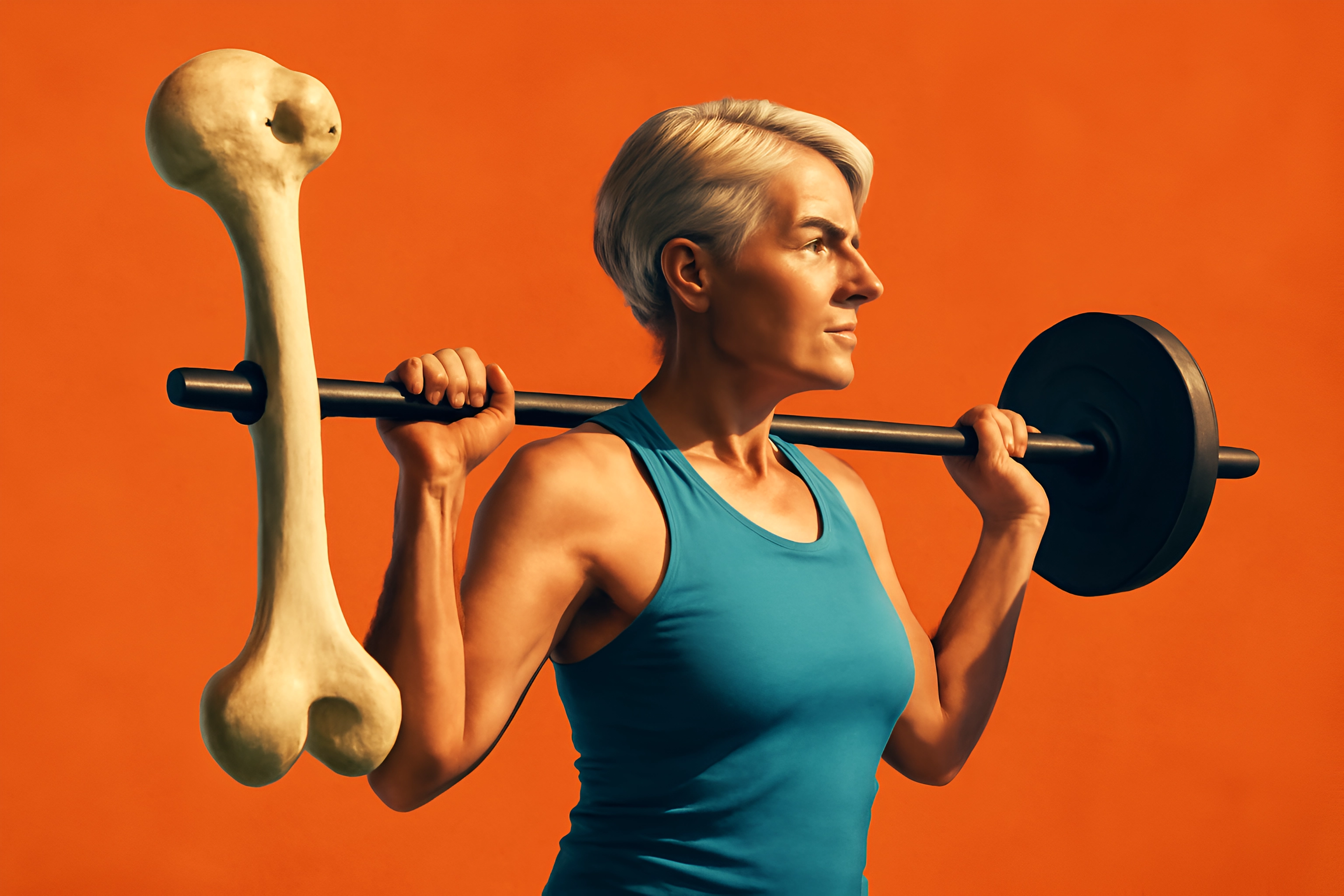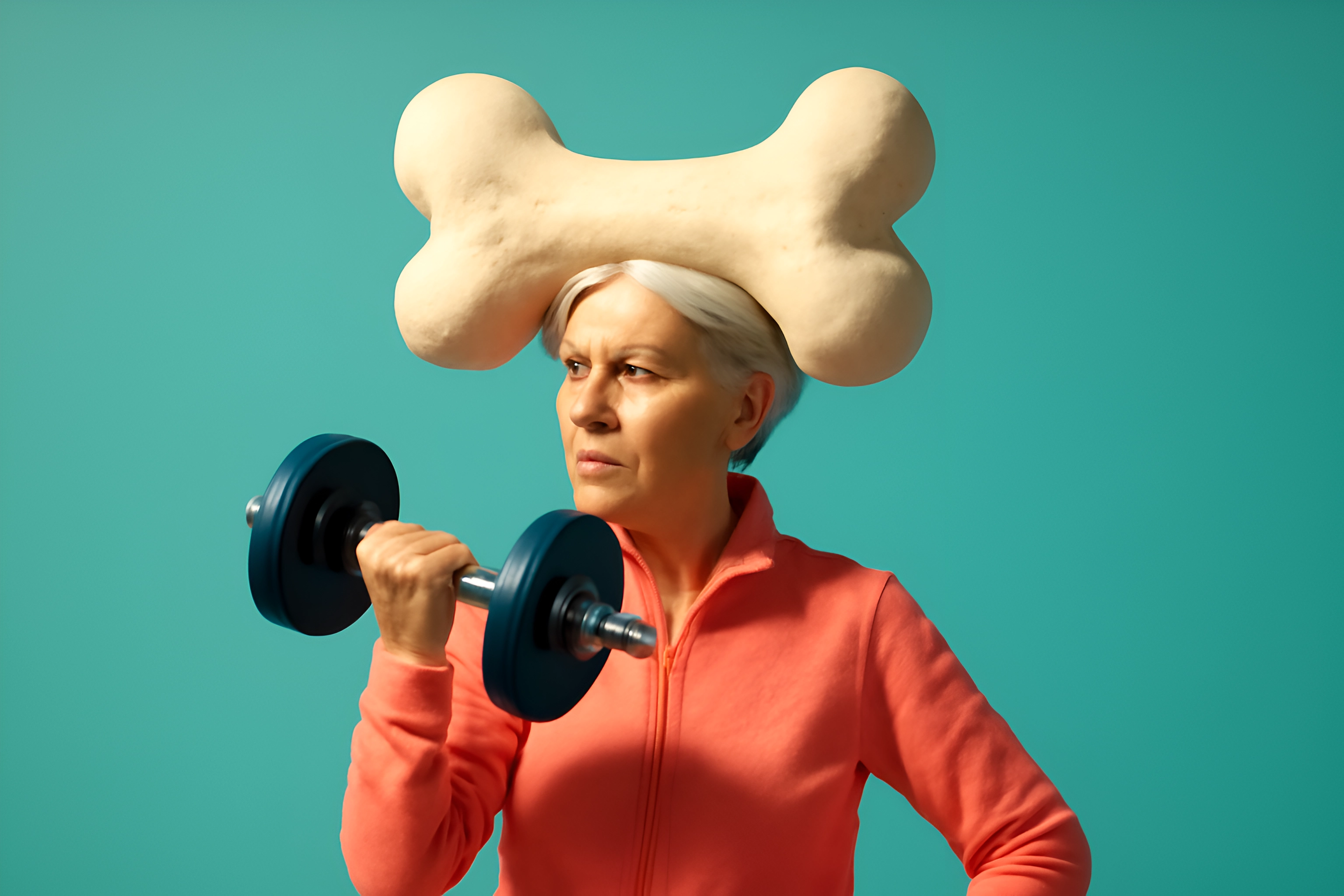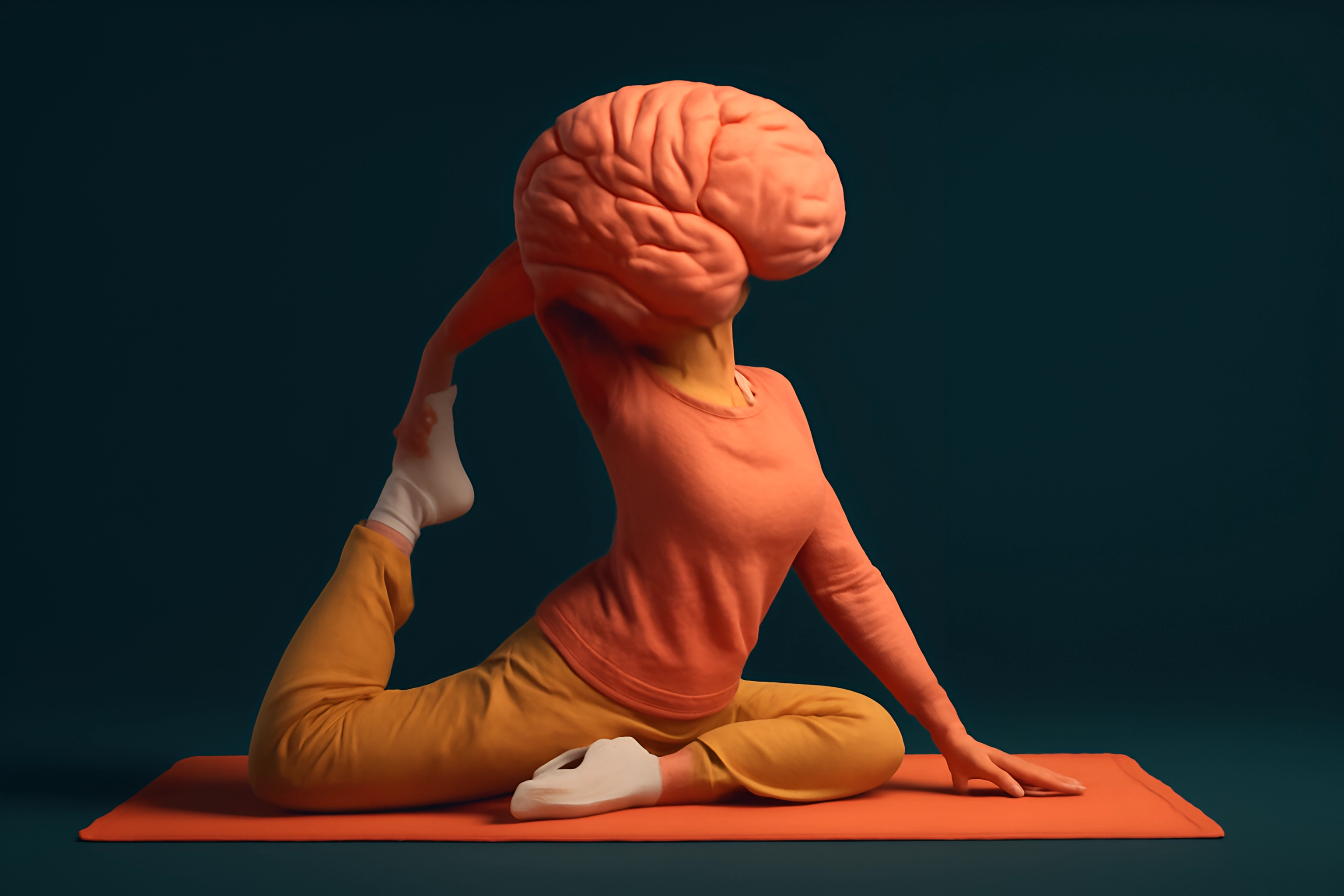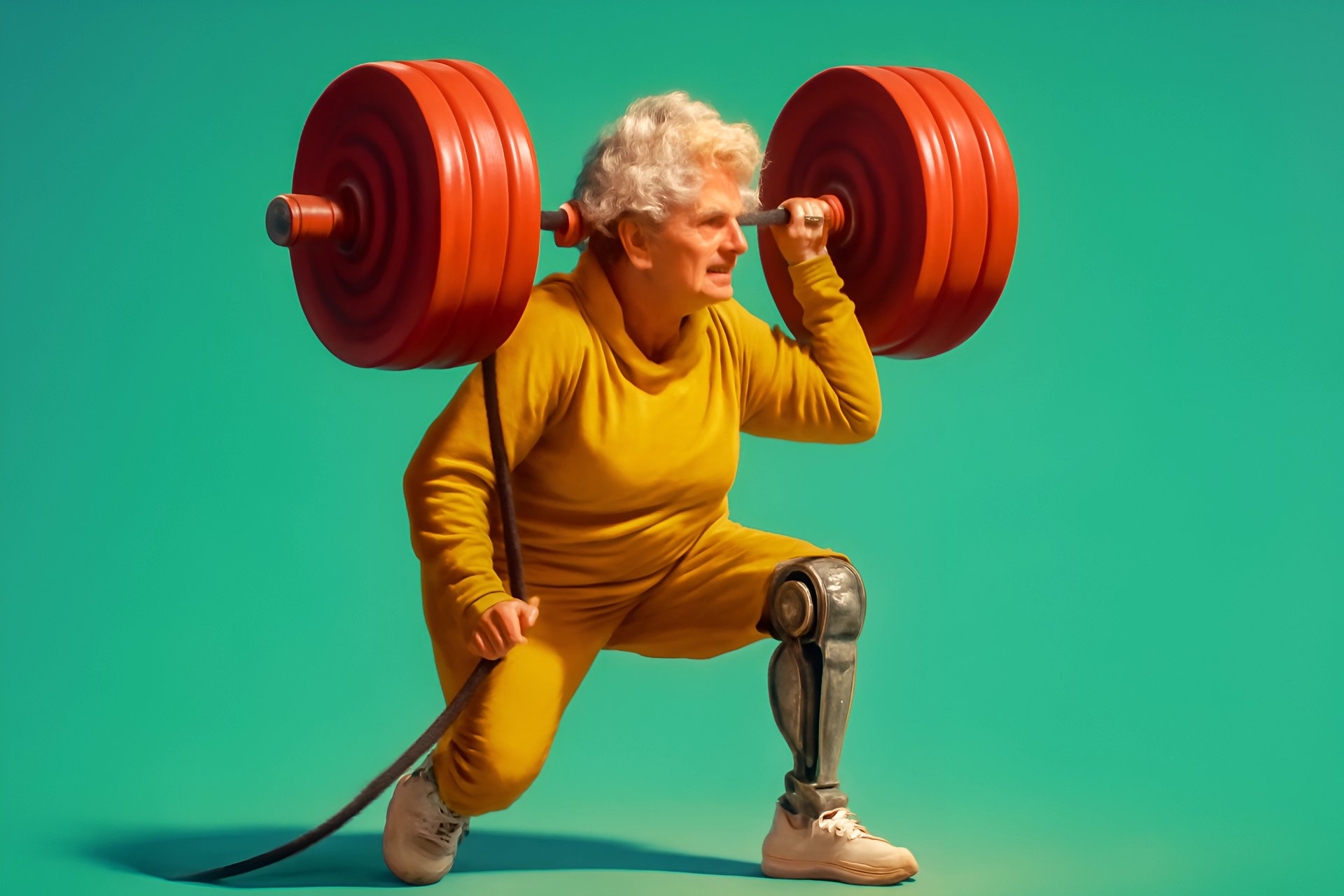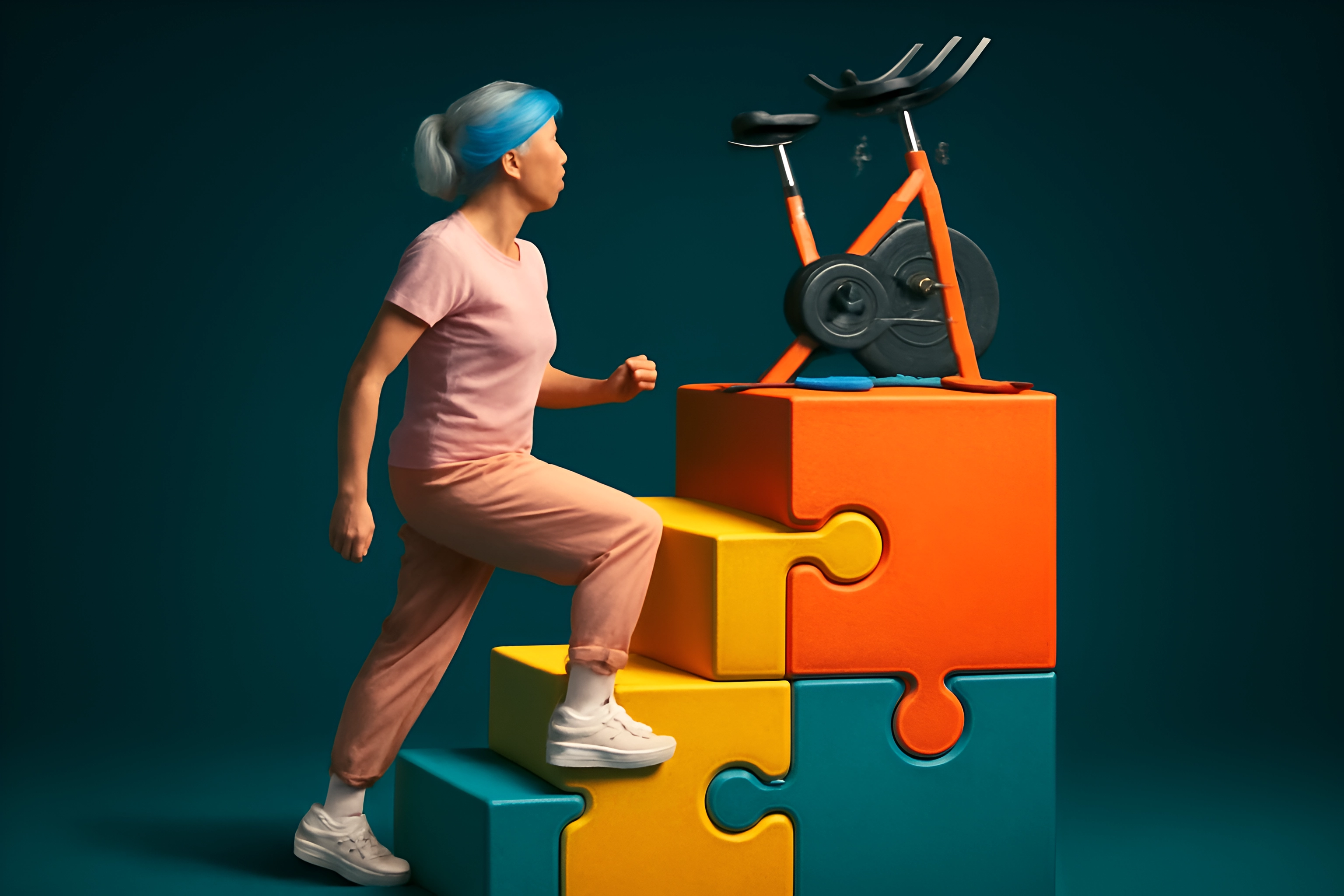
Remember that spark? That feeling of boundless energy you once had, the desire to embrace each day with vigor? Perhaps now, as you've gracefully crossed the 50-year milestone, you still feel that fire within, that deep-seated yearning to stay active, healthy, and vibrant. Yet, maybe a little voice whispers concerns – worries about creaky joints, memories of past injuries, or simply the overwhelming question of where to even begin. You might think, "I don't want to get hurt," or "Those high-impact workouts just aren't for me anymore."
What if I told you there's a way to reclaim that energy, to move with joy and confidence, without punishing your body? The answer, my friend, lies in the gentle power of low-impact exercise. This isn't about slowing down; it's about moving smarter. It's the perfect, sustainable solution – incredibly effective, wonderfully joint-friendly, and surprisingly energizing. This guide is your roadmap, a clear, step-by-step plan to craft a personalized low-impact exercise routine over 50, covering everything from invigorating warm-ups to restorative cool-downs and crucial injury prevention. At FitOverFifty, we believe it's never too late to invest in your health and vitality, and creating a safe exercise for seniors is paramount to that journey.
Why Low-Impact is Your Best Friend After 50
So, what’s the big deal about "low-impact"? Is it just a watered-down version of "real" exercise? Absolutely not! Let's clear the air and discover why this approach is about to become your body's most cherished ally.
What Exactly IS Low-Impact Exercise?
Think of low-impact exercise as movement that’s kind to your body. The core principle is simple: these are activities where at least one of your feet remains in contact with the ground at all times, or where your body is supported, like in swimming. This dramatically minimizes the jarring impact and stress on your joints. Contrast this with high-impact exercises like running, jumping, or high-intensity interval training that involves plyometrics, where both feet might leave the ground simultaneously, sending a shockwave through your system. While those have their place, for many over 50, a gentler approach reaps incredible rewards without the risks.
The Powerful Benefits for the Over-50 Body
The advantages of embracing low-impact workouts are not just about comfort; they're about profound, life-enhancing benefits. Firstly, joint protection is a massive win. By reducing stress on your knees, hips, ankles, and back, you can exercise more consistently and with less pain. This naturally leads to superior injury prevention, allowing you to stay active without the constant fear of setbacks. Many find that aquatic exercise reduces pressure on joints and muscles, making it an excellent choice for managing conditions like osteoarthritis.
But don't think low-impact means low results! You'll still achieve improved cardiovascular health, keeping your heart and lungs strong and efficient. The CDC confirms that 150 minutes per week of moderate aerobic activity, such as brisk walking, meets recommended guidelines. Furthermore, these exercises are fantastic for maintaining and improving mobility and balance, which are absolutely crucial for navigating daily life confidently and preventing falls. Because it’s gentler, low-impact exercise is often more sustainable and enjoyable, making it far easier to stick with in the long run. And let's bust a myth: low-impact routines are incredibly effective for building strength and stamina. Research even shows that activities like deep-water running can significantly improve cardiometabolic health with minimal joint stress.
Before You Begin: Essential First Steps
Alright, are you feeling that flicker of excitement? Ready to dip your toes into the world of low-impact fitness? Fantastic! But before you jump in, let's lay a solid foundation with a few crucial preparatory steps. This isn't about red tape; it's about setting yourself up for success and, most importantly, safety.
First and foremost, consult your doctor. This is non-negotiable, especially if you have any pre-existing health conditions, are managing chronic diseases, or haven't been physically active for a while. Your doctor can offer personalized advice and green-light your new fitness endeavors. The Mayo Clinic wisely advises consulting healthcare providers before starting new exercise routines, particularly for those with chronic conditions. Next, and this is a big one, learn to listen to your body. The old "no pain, no gain" mantra? Let's toss that out the window for this context. It's vital to differentiate between the satisfying ache of muscles well-worked and the sharp, persistent pain that signals something is wrong.
Now, let's talk goals. Set realistic goals for yourself. If you're new to exercise or returning after a break, start slow. Focus on consistency over intensity in the initial stages. Remember the CDC's advice to "start low and go slow" to avoid overexertion. When it comes to gearing up, keep it simple. Comfortable clothing that allows for a full range of motion and supportive footwear are key. For walking, WebMD suggests that flexible footwear can help prevent knee strain. Finally, hydration is key. Drink water before, during, and after your workouts. It's a simple step that makes a huge difference in your energy levels and recovery. Interestingly, the CDC notes that older adults often underhydrate, so make a conscious effort to sip regularly.
The Building Blocks of Your Low-Impact Routine
Now for the exciting part: constructing your very own low-impact exercise routine over 50. Think of this as assembling a personalized toolkit for vitality. We'll cover the essential components that, when combined, create a balanced and effective plan. This is where you truly take control of your fitness journey, crafting something that feels good and delivers results.
The Crucial Warm-Up (5-10 minutes)
Why is a warm-up non-negotiable? Imagine trying to stretch a cold rubber band – it’s more likely to snap. Your muscles are similar. A proper warm-up gradually prepares your muscles and joints for activity, increases blood flow, and significantly reduces your risk of injury. The Mayo Clinic recommends dynamic warm-ups like brisk walking and post-workout stretches to minimize injury.
Think gentle movements that mimic what you’re about to do. Some excellent low-impact warm-up examples include marching in place, big arm circles (forward and backward), shoulder rolls, gentle torso twists, and leg swings (holding onto a chair for support if needed). The goal is to feel a slight increase in your heart rate and a loosening in your limbs. This isn't about breaking a sweat yet; it's about waking up your body.
Cardiovascular (Aerobic) Exercise (Aim for 150 mins/week moderate intensity)
This is the heart of your routine – literally! Cardiovascular exercise, or aerobic exercise, strengthens your heart and lungs, improves circulation, boosts endurance, and is a fantastic mood elevator. The great news is you don't need to pound the pavement to get these benefits. The CDC suggests that 30-minute daily sessions of walking or swimming can help meet weekly aerobic goals.
There's a wonderful array of low-impact workouts for cardio. Brisk walking, either outdoors enjoying nature or on a treadmill, is a fantastic and accessible option. Swimming or water aerobics offers incredible cardiovascular benefits with virtually no impact, as the water supports your body. Cycling, whether on a stationary bike or outdoors on flat, gentle terrain, is another joint-friendly winner. Elliptical trainers provide a smooth, gliding motion that’s easy on the knees and hips. Don’t forget low-impact aerobics classes, available online or in many community centers, and even dancing – think ballroom, line dancing, or Zumba Gold – can be a fun and effective way to get your heart pumping. Remember, you can break this up into manageable chunks; for instance, 30 minutes, 5 days a week, or even shorter 10-15 minute sessions throughout the day if that suits your schedule better. WebMD even provides a 10-minute aerobic routine template that can be adapted.
Strength Training (2-3 times per week, non-consecutive days)
"Strength training? Isn't that for bodybuilders?" Not at all! For those over 50, strength training is absolutely vital. It helps preserve precious muscle mass (which naturally declines with age, a condition known as sarcopenia), boosts your metabolism, supports bone density (crucial for preventing osteoporosis), and improves your functional strength for everyday tasks like carrying groceries or getting up from a chair. The National Institute on Aging (NIA) emphasizes that strength training combats sarcopenia and highlights bodyweight exercises and resistance bands.
You don't need a fancy gym or heavy weights to build strength effectively with low impact. Bodyweight exercises are your friend: think chair squats (using a sturdy chair for support and to ensure proper depth), wall push-ups (easier on the wrists and shoulders), modified planks (from your knees), glute bridges, and calf raises. Resistance bands are incredibly versatile, inexpensive, and gentle on the joints; use them for bicep curls, rows, and lateral walks. If you have light dumbbells, or even household items like water bottles or cans, they can be used for curls, overhead presses, and rows. Don't overlook Pilates or specific yoga styles like Hatha or Restorative Yoga, which build core strength and muscular endurance with controlled movements. Aim to work all major muscle groups: legs, back, chest, shoulders, arms, and your core.
Flexibility & Balance (Daily or several times a week)
Often overlooked, flexibility and balance exercises are the unsung heroes of an exercise routine for older adults. Flexibility helps maintain your range of motion, reduces stiffness, and can alleviate aches and pains. Balance is absolutely crucial for preventing falls, which can have serious consequences as we age. The good news is that incorporating these doesn't require a huge time commitment.
For flexibility, focus on static stretches where you hold each stretch for 15-30 seconds without bouncing. Think hamstring stretches (sitting on the floor with legs extended or using a chair), quad stretches (standing, holding onto a chair for balance), and chest stretches (standing in a doorway). Tai Chi is an ancient practice renowned for its gentle, flowing movements that are excellent for improving balance and coordination. Research from the NCCIH shows that Tai Chi improves gait dynamics and reduces fall risk. Gentle or restorative yoga also incorporates wonderful stretches and balance poses. Simple balance exercises, like standing on one leg (near a wall or chair for support initially) or practicing a heel-to-toe walk, can make a big difference. WebMD notes that balance exercises like single-leg stands enhance core and leg strength without high impact.
The Essential Cool-Down (5-10 minutes)
Just as you eased into your workout, you need to ease out of it. The cool-down is essential for allowing your heart rate to return to its resting state gradually. It also helps reduce muscle soreness and promotes relaxation, signaling to your body that the work is done. Think of it as a gentle thank you to your body for all its hard work.
Your cool-down can mirror some of your warm-up activities but at an even slower pace. Slow, leisurely walking is a great start. Follow this with some gentle static stretches, holding each one a bit longer than you might in a warm-up, perhaps for 30 seconds or more. Focus on the muscles you worked during your session. This is also a perfect time for a few moments of mindful breathing to truly unwind.
Putting It All Together: Sample Weekly Low-Impact Schedules
Feeling a bit overwhelmed by all the components? Don't be! Let's look at how you can weave these building blocks into a cohesive weekly plan. Remember, these are just templates. The magic happens when you personalize them based on your current fitness level, your preferences (what do you enjoy?), and the time you realistically have available. The goal is progress, not perfection.
A key principle, as outlined by the CDC's physical activity guidelines, is to aim for at least 150 minutes of moderate-intensity aerobic activity per week, plus muscle-strengthening activities on 2 or more days a week.
Sample Schedule 1: Beginner Focus (3-4 days/week)
This schedule is perfect if you're just starting out or returning to exercise after a break.
- Day 1: Warm-up (5 min) + Brisk Walk (20-30 min) + Cool-down & Stretch (5-10 min)
- Day 2: Warm-up (5 min) + Strength Training (15-20 min: chair squats, wall push-ups, resistance band rows) + Flexibility (10 min: gentle stretches) + Cool-down (5 min)
- Day 3: Rest or very light activity (e.g., a short, leisurely stroll, gentle stretching)
- Day 4: Warm-up (5 min) + Water Aerobics or Stationary Cycling (25-30 min) + Cool-down & Stretch (5-10 min)
- Day 5, 6, 7: Rest or light activity
Sample Schedule 2: Building Up (4-5 days/week)
Once you feel comfortable with the beginner schedule, you can gradually increase the duration and frequency.
- Day 1: Warm-up (5-10 min) + Brisk Walk or Elliptical (30-40 min) + Cool-down & Stretch (10 min)
- Day 2: Warm-up (5 min) + Strength Training (20-30 min: bodyweight exercises, light dumbbells, or resistance bands – focus on different muscle groups than Day 5) + Balance Exercises (10 min) + Cool-down (5 min)
- Day 3: Active Rest (e.g., Tai Chi class, restorative Yoga session, or a longer leisurely walk – 30 min)
- Day 4: Warm-up (5-10 min) + Swimming or Cycling (30-40 min) + Cool-down & Stretch (10 min)
- Day 5: Warm-up (5 min) + Strength Training (20-30 min: focus on muscle groups not worked as intensely on Day 2) + Flexibility (15 min: deeper stretches) + Cool-down (5 min)
- Day 6, 7: Rest or light activity
How to Progress: The key is gradual progression. You can slowly increase the duration of your workouts (e.g., adding 5 minutes to your walk each week), the frequency (adding an extra workout day), or the intensity (e.g., walking a bit faster, using a slightly heavier resistance band, or adding more repetitions to your strength exercises). Using tools like walking logs can help track consistency and progress.
Staying Safe & Injury-Free on Your Fitness Journey
Embarking on a new fitness path is exhilarating, but the golden rule is to keep it safe and sustainable. Your well-being is paramount, and a few smart strategies can ensure your low-impact exercise routine over 50 remains a source of joy, not injury. This is where your commitment to safe exercise for seniors truly shines.
The most important piece of advice, worth repeating, is to listen to your body. Stop immediately if you feel any sharp, sudden, or persistent pain. Muscle soreness after a new workout is normal, but pain is a warning signal. Proper form is paramount, especially with strength exercises. It’s always better to do fewer repetitions with correct form than many with poor technique, which can lead to strain or injury. If you're unsure, consider watching reputable online videos or even investing in a session or two with a qualified personal trainer who has experience with older adults.
Gradual progression is your best friend in injury prevention. The temptation to do too much, too soon, especially when you're feeling motivated, can be strong. Resist it! The CDC’s mantra to "start low and go slow" is crucial here. Don't underestimate the power of rest days. Your muscles need time to recover, repair, and rebuild, which is when they actually get stronger. Finally, be aware of your environment. Choose safe walking paths, ensure your home workout space is clear of clutter, and use non-slip surfaces, especially for balance exercises. And as mentioned earlier, proper footwear with flexible soles can prevent knee strain during walks.
Making It Stick: Tips for Long-Term Success & Enjoyment
You’ve got the knowledge, you’ve got the plan – now, how do you ensure this newfound commitment to your health becomes a lasting habit? The secret isn't just about discipline; it's about weaving joy and practicality into your routine. After all, if you don't enjoy it, you're far less likely to stick with it.
The absolute cornerstone of long-term success is to find activities you genuinely enjoy. If you dread your workouts, they'll quickly fall by the wayside. Experiment! Try different types of low-impact cardio or strength training until you discover what makes you feel good and look forward to moving. The Mayo Clinic emphasizes choosing enjoyable activities to ensure long-term adherence. Another powerful motivator is to buddy up. Exercise with a friend, family member, or join a group or class. The social connection and accountability can make a huge difference. Research indicates that social support and realistic goals boost adherence to exercise programs.
Set small, achievable goals and celebrate your milestones. Did you complete all your planned workouts for the week? Did you walk a little further or hold a balance pose a bit longer? Acknowledge these victories! Tracking your progress, whether in a journal or using an app, can also be highly motivating for some. And perhaps most importantly, be patient and kind to yourself. Progress isn't always a straight line. There will be days when you feel less energetic or miss a workout. Don't let it derail you. Just get back on track with your next planned session. Finally, look for ways to integrate movement into your daily life. Take the stairs instead of the elevator, walk for short errands, get up and move during TV commercials, or enjoy activities like gardening. These small bursts of activity add up!
Conclusion: Embrace Your Active Future with Confidence
Building a low-impact exercise routine over 50 isn't just a good idea; it's an empowering act of self-care, a declaration that you value your health, your mobility, and your zest for life. As you've seen, it's entirely achievable, profoundly beneficial, and can be tailored to fit your unique needs and preferences. This journey is not about chasing an old version of yourself, but about embracing the incredible, vibrant person you are right now, and equipping your body to carry you forward with strength and grace.
The key message to take away is this: movement is medicine, and low-impact exercise is a gentle yet potent prescription for feeling good, staying mobile, and enjoying life to its absolute fullest. At FitOverFifty, we're passionate about helping you discover this. You now have the knowledge and the tools to start today. Your body, your mind, and your spirit will thank you for it. You've got this!





